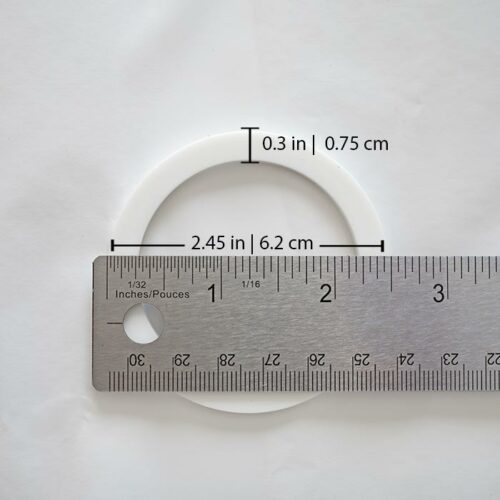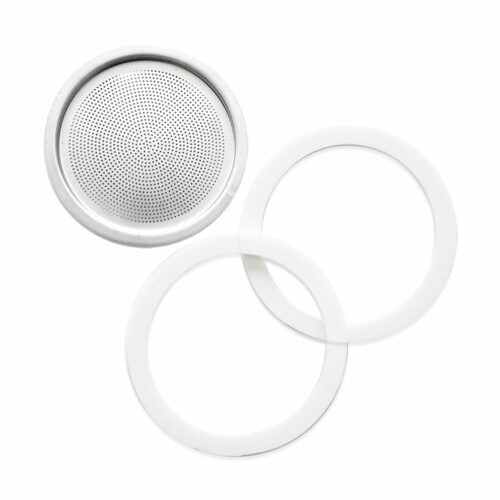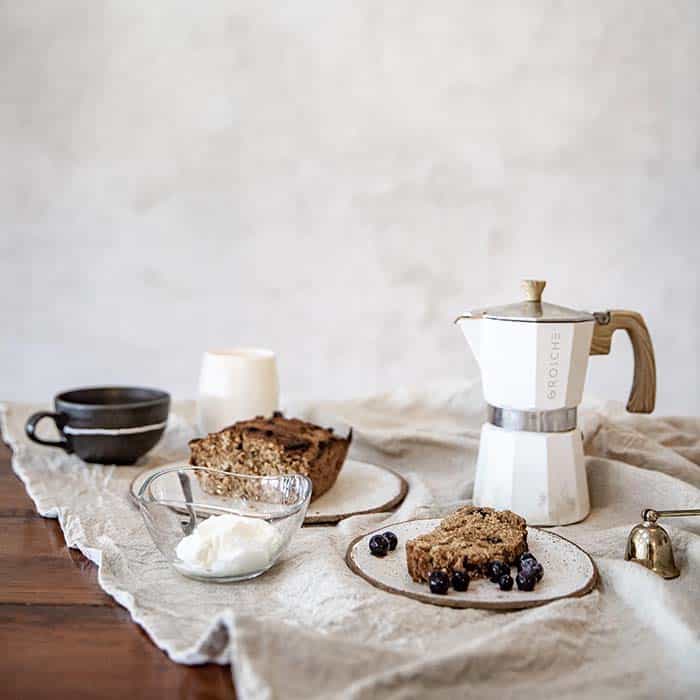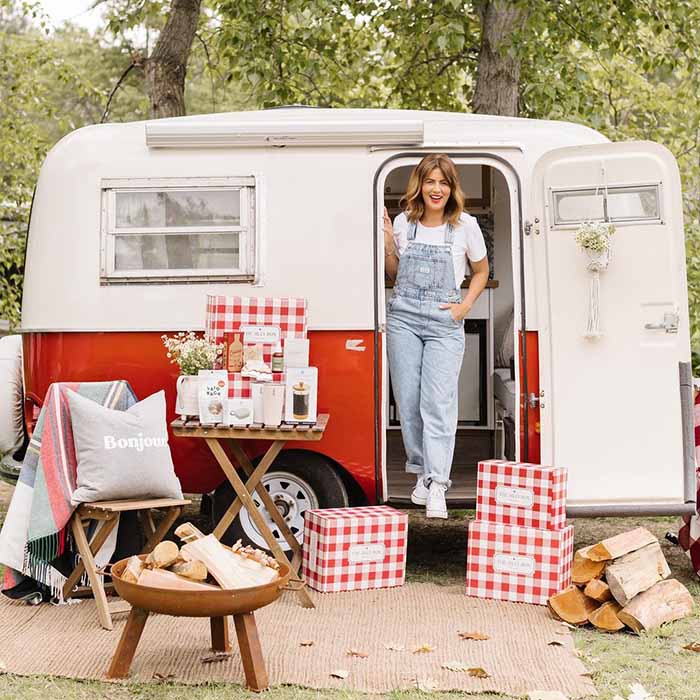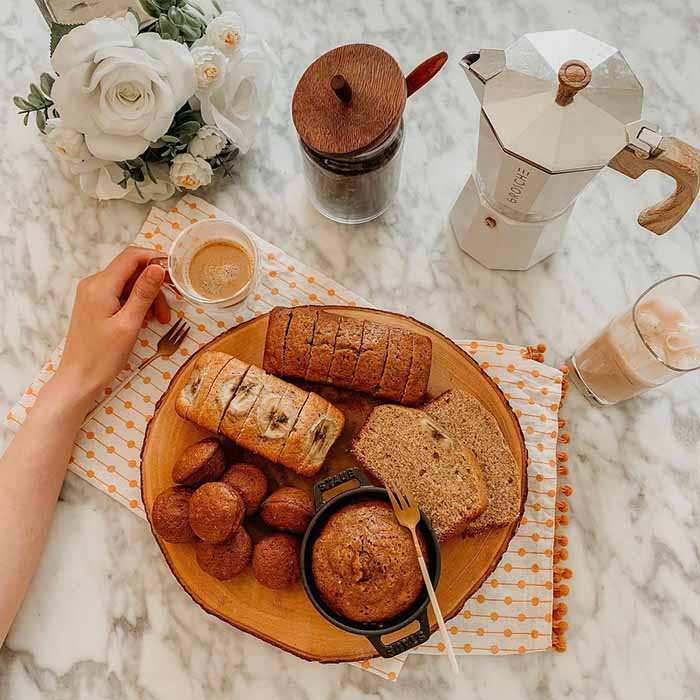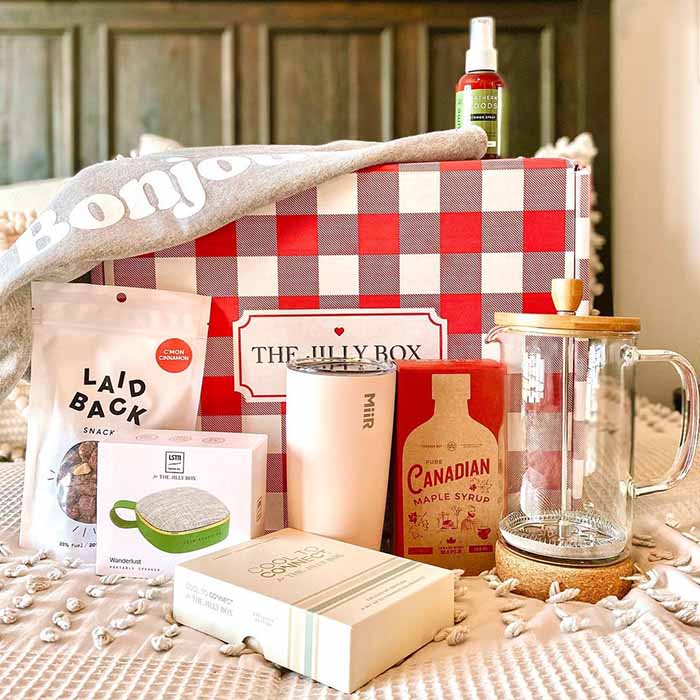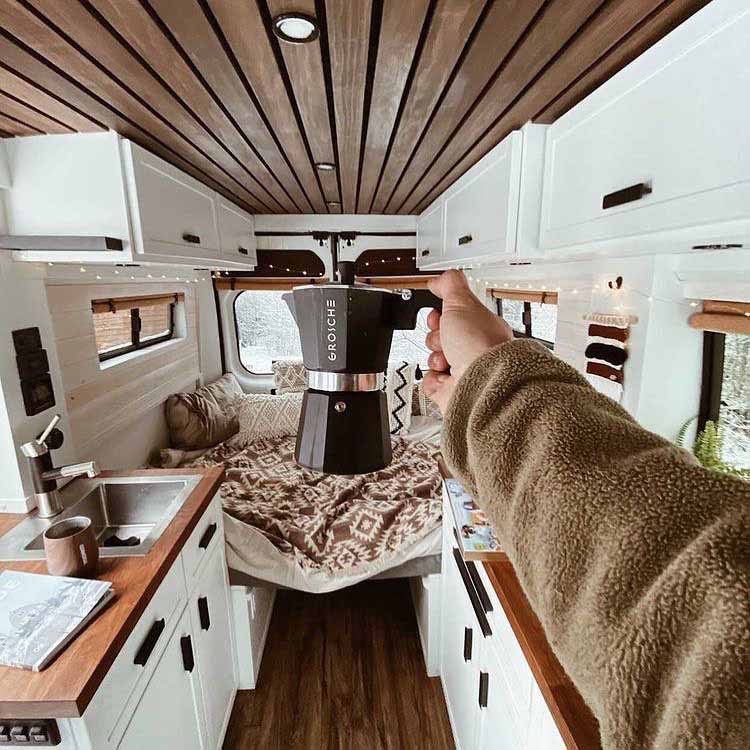Brewing your morning moka pot coffee can be tricky at times, but every coffee lover agrees that once you learn the ways of stovetop espresso, its very rewarding.
Nothing compares to the rich flavours that a stovetop espresso maker, like the GROSCHE moka pot bring out. The strong moka espresso coffee can be enjoyed alone or can also be used to make lattes, cappuccinos and other specialty coffee drinks.
But you don’t need to navigate stovetop espresso alone. We’ve gathered some of the most common moka pot coffee problems, and questions that arise when brewing stovetop espresso coffee.
Top Moka Pot Coffee Problems & Solutions
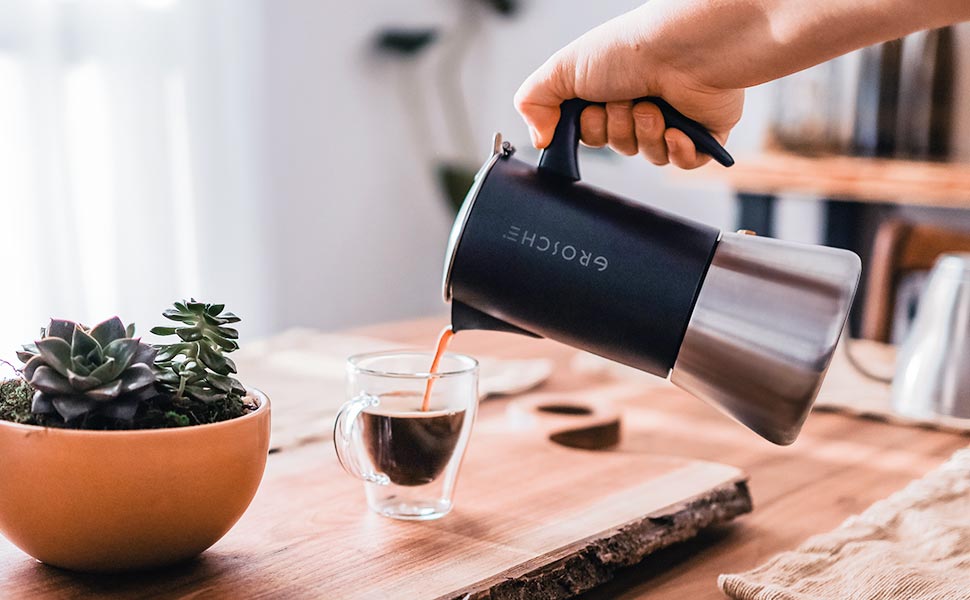
1. Water is leaking out of the middle of my stovetop espresso maker
The middle of your moka pot is where the upper chamber screws back on to the bottom.
This will leak if the top and bottom are not tightly or properly screwed back together.
This also could mean there is blockage in the gasket, or that it is time for a new gasket or seal.
It is recommended that you change your gasket every 4 to 6 months.
Replacements can be purchased here.
2. The safety valve on the lower chamber of my moka pot is shooting out steam
There are 3 potential causes for this problem.
- The safety valve or filter is clogged
When a moka pot is improperly cleaned mused coffee grounds can fall into the chamber, or water residue can build up in the valve. This leads to a blockage which stops the valve from relieving pressure buildup.
To fix this you must;
- Take apart the entire moka pot (including the filter and gasket).
- Give everything a thorough rinse.
- You can take a toothbrush an clean around the safety valve. Don’t try to disassemble the safety valve, its not designed to be taken apart.
For a guaranteed clean, you can descale your moka pot with vinegar and lemon juice. Learn how here.
- There is too much water in the reservoir
Remember, its normal for a small amount of water to be left over after brewing. A small amount of water in the reservoir protects your machine from boiling dry.
When adding water to the bottom chamber of your moka pot, you must always fill to just below the safety valve.
Make sure when filling the bottom chamber you do not cover the safety valve. If you cover the safety valve in water it will malfunction.
- The coffee grinds have been compressed
Do not tamper your coffee grinds before brewing.
Unlike electric espresso machines and other coffee makers, stovetop espresso maker moka pots do not require you to pack or tamp (compress) in the coffee grounds.
Compressing the coffee grounds can create unsafe pressure in a moka pot and does not allow enough space for a proper brew.
3. Coffee is spilling out of my moka pot when I brew
Turn down the heat!
The only instance where this could occur is when the moka pot is at too high of a heat setting and is left on the burner for too long so the coffee reaches a boiling point too quickly.
When making stovetop espresso you only need to turn the burner on low to medium heat depending on your stove.
4. My moka pot is getting burn marks on it
Do not worry, the aesthetic may be a tad tarnished but after a quick cleaning or descale your moka pot is still safe to use. However, burn marks are preventable and usually only appear due to two reasons.
- The flame or heat level is too high
If you’re using your moka pot on a camp fire, gas stovetop or propane stove top, you must ensure that the flames are not higher than the base of the espresso maker.
If the flames are too high, they will burn the sides of your moka pot as your coffee brews and tarnish the finish.
- The moka pot is being left on the burner for too long
We’re all human, we do it. It’s easy to get distracted and leave your stovetop espresso maker on for a little too long.
But it may leave behind a few burn marks. Start on a low heat setting and as soon as you hear coffee bubbling up from the filter funnel turn down the heat even more.
When the gurgling sound stops, your moka espresso coffee is done and should be taken off the heat.
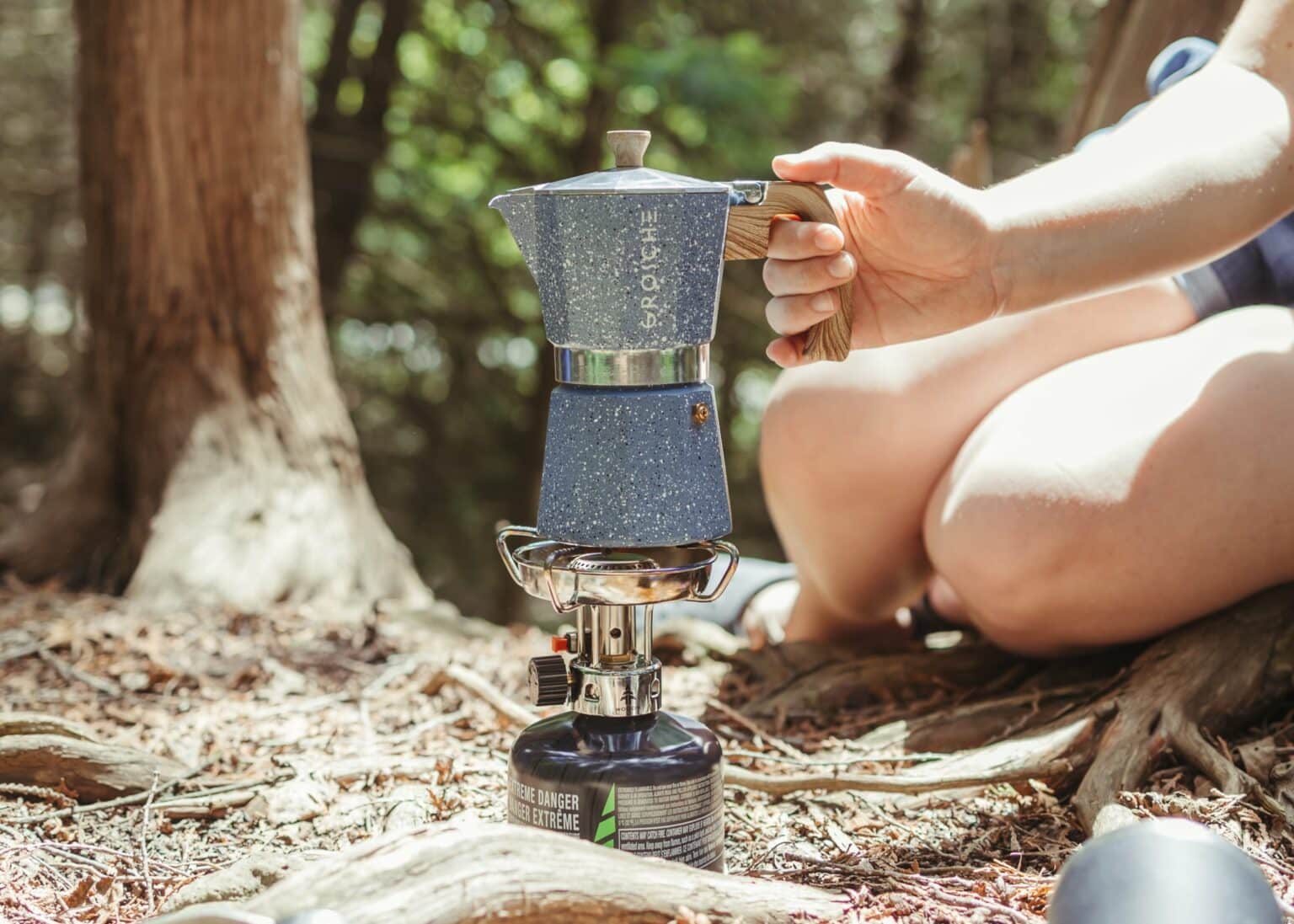
5. Only a small amount of coffee is coming through the moka pot funnel into the dispensing chamber
There are a few things you can look at to solve this problem.
a) There is a blockage in the filter
If you are reading this then likely there is a build up of debris, calcium or small coffee grinds.
A blockage in the filter will prevent the coffee from bubbling through. Filters are removable and cleanable.
To do this:
-
- Use a butter knife to gently remove the silicone seal, and release the filter screen to clean it.
- Make sure you don’t nick the silicone seal or you will need to replace it as it may not work if its damaged.
b) Your gasket and/or filter need to be replaced
Did you know your gasket needs to be replaced every 4-6 months?
A fresh gasket is vital to a proper seal and pressure for your moka pot coffee.
When it comes to your funnel filter, it must fit neatly into the bottom chamber.
If it is bent or worn around the edges it will need to be replaced.
You don’t need to replace your entire machine, moka pot replacements can be purchased here.
c) The coffee grinds have been compressed or ground too fine
Unlike electric espresso machines or drip coffee makers, stovetop espresso maker moka pots do not require you to pack in the coffee grounds. If they are packed down, they will hinder the flow of the water as it percolates.
If the coffee grounds are too fine (like Turkish coffee), then they can plug up the moka pot as well. That can also give you grounds in your brewed coffee.
6. My Moka Pot turned black when I washed it in my dishwasher
Aluminum moka pots are not dishwasher safe.
They are made of anodized aluminum, and when placed in a dishwasher lose the anodization and oxidize. If that happens do not use the moka pot any more. Its best to just lightly hand wash them with water and a soft sponge.
Check the filter screen whenever you wash it to make sure its free flowing without any blockage.
7. There is water left over in the boiler after I brew
Its normal to have some water left over in a moka pot after brewing.
They are designed that way. The steam pressure pushes water up the funnel, in the gap between the funnel and the base of the boiler chamber.
hat leftover water also helps protect your moka pot from being heated in a dry state, which could become a safety concern if left unattended.
8. My handle is getting hot when I brew. Is this normal?
The handle should not get hot when brewing coffee in a stovetop espresso maker.
If you set the heat too high, it will lead to the handle getting hot. Always use the smaller burner on your stove whose size matches the size of your moka pot.
Reduce the heat, and you will brew a tastier cup and the handle will not get hot from excessive heat.
9. I’ve been washing it with dish soap, is that ok?
How to clean a moka pot, is a common question were often asked. Traditionalists will tell you that a moka pot conditions over time, and best way to wash it is to just rinse it with water and use a light brush or very soft non abrasive sponge without soap to clean it. Wipe it dry with a clean cloth. That’s it!
That allows it to condition over time and will give you the best tasting coffee without any leaks or wear. So if you want to know how to clean a moka pot, just use water!
10. My moka pot isnt brewing espresso with foam on it, is something wrong?
Moka pots are a type of stove top coffee maker that make a specific type of coffee. The heat from your stove creates pressure in the boiler chamber, pushing hot water (not boiling water) up through the coffee grounds into the coffee collector on top.
This brewing at less than a boil extracts the flavor of the coffee without the burnt flavor from using boiling water. Coffee lovers describe moka coffee flavor as chcolatey and smooth.
Although they are often called stove top espresso makers, and brew under pressure, technically they dont brew espresso coffee like you would find from a high pressure electric espresso machine. An electric espresso machine will typically brew at between 7 and 10 bars of pressure creating foam, but extracting bitterness. Moka coffee brews between 1 and 3 bard bring out rich and deep flavors with less bitterness.
More Moka Pot tips for Brewing and Cleaning
Can the GROSCHE moka pot go on a campfire or wood stove?
GROSCHE moka pots, both the MILANO and MILANO Steel will work over a camp fire, on wood stoves and propane or other gas stoves. To prevent damage and ensure a delicious brew, make sure any flames are not higher than the moka pot itself.
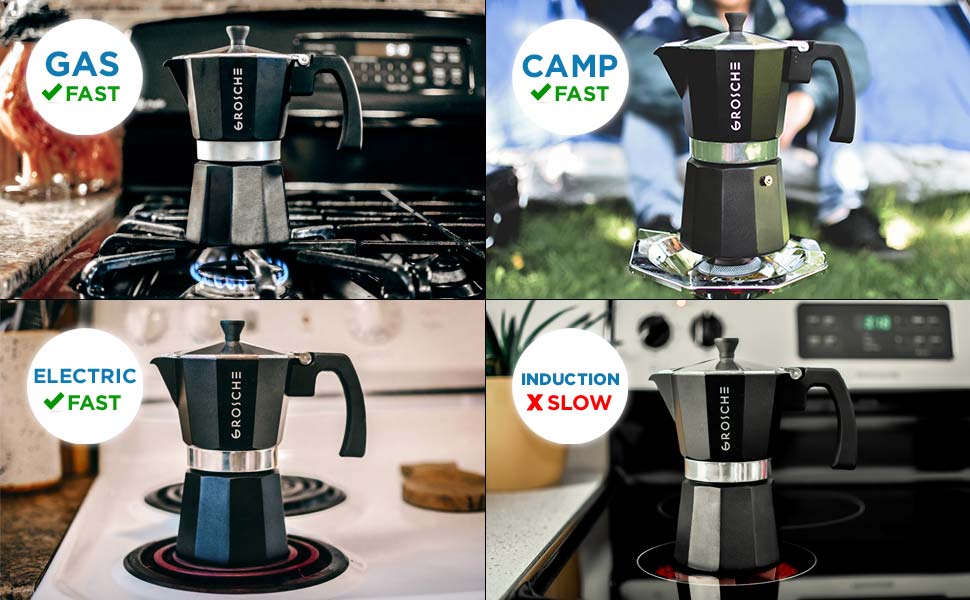
What is the difference between an aluminum and stainless steel moka pot?
A stainless steel stovetop espresso maker can brew espresso on any stovetop type, including gas, electric, coil, glass induction and propane. Meanwhile, an aluminum stovetop espresso maker does not work properly on glass induction stove tops.
Aluminum moka pots also cannot go in the dishwasher, while stainless steel can. Due to a difference in material, stainless steel moka pots tend to last longer and in better condition than aluminum, but both brew great tasting coffee.
Can a Milano go in the dishwasher?
An aluminum moka pot, like the Milano, cannot go in the dishwasher.
If placed in the dishwasher the aluminum will tarnish and turn black. However, all stainless steel stovetop espresso makers, like the MILANO Steel are dishwasher safe.
Why does so much water stay in the base of the stovetop espresso maker after brewing?
Leftover water is perfectly normal when brewing moka coffee.
Not all of the water will make its way to the top because the funnel does not touch the bottom of the moka pot. If designed otherwise, the coffee maker would utilize the pressure properly. Discard any extra water after you’ve poured your brew and the pot has cooled.
How often should I replace the gasket?
Every 4-6 months consider changing the gasket and silicone seal that maintains the pressure in the boiler section. Once you begin to have problems with your brew that’s usually a sign that it’s time for a new gasket or seal. Replacements can be purchased here.

What do to when you get a new moka pot?
When you first get the moka pot, try out a few practice moka coffee brews.
This will let you learn how strong your stove is, what heat setting works best, and also how long it takes on your stove.
Added benefit: the coffee oils also coat the inside of the moka pot conditioning it for a tasty and consistent brew.


